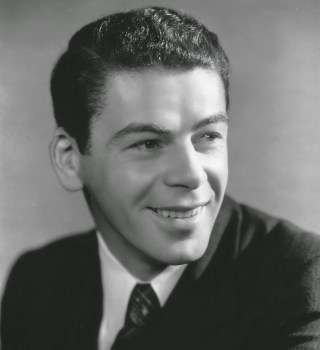Although he appeared in only twenty-five films during his career, he received six nominations for Academy Awards, winning once for Best Actor in 1936 in 'The Story of Louis Pasteur'.
Biography
Paul Muni was born Meshilem Meier Weisenfreund on September 22, 1895 in Lemberg, Galicia, a province of the Austro-Hungarian Empire, now called Lviv, in the Ukraine. His family was Jewish, and spoke Yiddish. When he was seven his family emigrated to the United States and his parents toured the midwest acting with the Yiddish theater. He joined them as a young boy in 1908, often playing characters much older, in heavy stage makeup. In his first stage role at the age of 12, Muni played the role of an 80-year-old man. His makeup skills were so creative that he began to b called 'the new Lon Chaney.'From 1910 he toured with various Yiddish acting companies around America, firstly with Samuel Grossman's theater troupe, then a burlesque company in Philadelphia, and from 1917 for a year he worked with Molly Picon's company in Boston.
His talent was recognised by the founder of the New York Yiddish Art Theater, Maurice Schwartz, who signed him up in 1918 and he became a star of Yiddish theater during the 1920s. Muni's acting was all in Yiddish until his first Broadway appearance in 1926 when he performed in English, in 'We Americans', credited as Muni Wisenfrend. It was his first English-speaking acting part and his performance brought him to the attention of Hollywood.
Hollywood Actor
He was signed by Fox, and his first film, 'The Valiant', in 1929 brought him his first of four Academy nominations, although the film did not do well at the box office. His second film, 'Seven Faces', also fared badly, and, disillusioned and unhappy with the roles being offered him, he returned to Broadway. His first starring role on his return was in the play 'Counselor at Law' which became a major hit and which brought him to the forefront of stage actors.In 1932, he resumed his film career, starring as a sister-obsessed gangster in 'Scarface'. He was nominated a second time for Best Actor for his performance in another pre-Code movie, 'I Am a Fugitive from a Chain Gang'. This was his first movie after signing a long term contract with Warner Brothers which also allowed him to act on the stage between pictures.
In the ensuing years until his retirement in 1959, he spent his time alternating between film and stage and between "entertaining" movies like 'Dr Socrates' in 1935 and more prestigious pictures which enabled him to experiment with makeup and accents. In this latter group are his three biographies: 'The Story of Louis Pasteur' in 1936, (which won Muni his Best Actor Oscar), 1937's 'The Life of Emile Zola', and 'Juarez' in 1939..
Muni's contract at Warner Brothers gave him script approval and he became extremely selective in the work he chose to do. He was an obsessive perfectionist and he would spend months researching a character and preparing for his performance. Even after filming had begun he would stay in character between takes and sometimes even away from the studio. His methods worked and he became known as one of the finest actors of his generation..
On the set Muni depended almost completely on the advice and opinions of his wife, Bella, whom he married in 1921. If she did not approve of a take it would have to be re-shot. He was an eccentric man and did not like the color red, panicking on set if he saw someone wearing it..
In 1939 he had a major Broadway success with 'Key Largo' but during the 1940's made just a handful of films, mostly unsuccessful, such as 'Commandos Strike at Dawn' with Lillian Gish in 1942 and the fantasy movie 'Angel on My Shoulder' in 1946, until 1955 when he made a triumphant comeback in the role of Henry Drummond in the Broadway production of 'Inherit the Wind', for which he won the Tony award..
Later Career
He made an easy transition to the new medium of television and appeared in several dramas during the late 1940's and early 1950's. His last Hollywood movie was 'The Last Angry Man' in 1959 and his final screen appearance was on television, in a guest role on the dramatic series 'Saints and Sinners' in 1962..After this his deteriorating health and in particular his eyesight, forced him into retirement..
Personal
In 1921, Muni married Bella Finkel, an actress in the Yiddish theatre. They remained married until his death. Paul Muni died from heart failure on 25 August 1967, in Santa Barbara, California. He was buried at Hollywood Memorial Cemetery (now called Hollywood Forever), Hollywood, California.Paul Muni Filmography
The Valiant
Seven Faces
Bordertown
Black Fury
Dr. Socrates
The Story of Louis Pasteur
Juarez
We Are Not Alone
Hudson's Bay
Commandos Strike at Dawn

